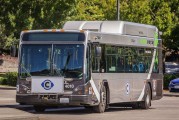Is there ‘substantial demand’ for transit on the replacement Interstate Bridge?
The Executive Steering Group (ESG) that provides oversight to the Interstate Bridge Replacement (IBR) program met for its monthly meeting. On the agenda was a review of the LPA (locally preferred alternative) process, a transit options overview, an update from the Community Advisory Group, and a review of their Climate Program.
Several councilors were chatting as the meeting started. They noted there was a challenging meeting earlier in the morning at Portland Metro’s JPACT transportation meeting, where there were two action items related to I-205 tolling on the agenda.
The ESG meeting got off to a good start, and lots of “congratulations” were offered to the Washington delegation, as C-TRAN CEO Shawn Donaghy announced that the Washington legislature had delivered $1.2 billion in funding for the IBR project. That was later corrected to $1 billion by Mayor Anne McEnerny-Ogle.
“We’re pretty excited to see how this financial commitment unlocked some of the funding opportunities with our federal and Oregon partners,” McEnerny-Ogle said. She noted that Vancouver had “additional millions” (about $100 million) from the 2015 gas tax package for reconstruction of the Mill Plain interchange. which adds to the funds the legislature recently allocated.
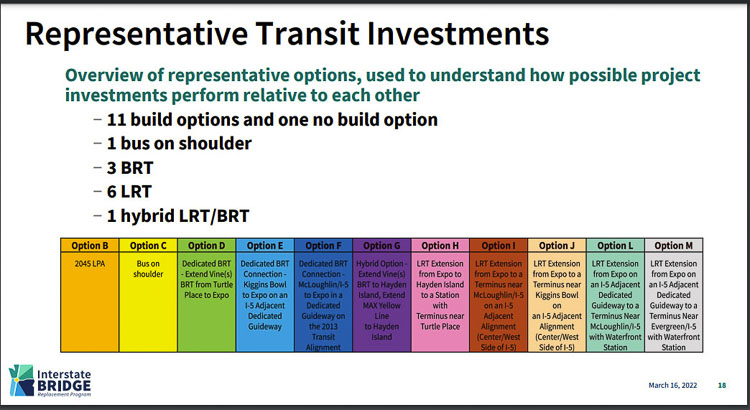
TriMet’s Steve Witter described the Washington funding as “capture this lightning in a bottle and advance the project as quickly as we can.”
WSDOT Secretary Roger Millar said his agency feels like the dog that caught the car. “We have the federal package and now we have the state package,” he said. “It’s time to deliver. And it’s it’s time to make sure that the stuff that we deliver is worthy of deliverance,”
But Portland Commissioner Jo Ann Hardesty quickly threw water on the celebration. “What I’m hearing today makes me a little nervous,” she said. “I just want to put it out there that there seems to be a rush to the finish line without actually having details that will be important for me to have as I educate my colleagues about this project and where we’re going, and how we’re going to fund it and all the other stuff we’ve been talking about.”
“I don’t want to be a downer,” she said. “But I also want to be a realist. We don’t rush things of this magnitude.” Hardesty spoke about not having “specific information” she needs to not only educate herself, but also the Portland City Council.
Ray Maybe spoke to the group about tolling, calling the tolls a “user fee.” He mentioned a recent agreement reached between the two state DOTs on tolling. The memorandum of understanding (MOU) will allow ODOT to be administrator of the collection program for the bridge. He noted that WSDOT is the only agency with experience, having several tolling programs up and running.
He noted that ODOT will be setting up its separate tolling programs for the various Portland area tolling projects, and therefore it was chosen as administrator. “What it isn’t, is how to set those toll rates, how to do cost sharing, all the other things that need to happen.”
Maybe indicated that Oregon will be responsible for all the costs of tolling administration related to their tolling programs in that state. The costs attributed to the replacement Interstate Bridge will be split between the two states.
Metro President Lynn Peterson said she was surprised to see the information in the meeting package, and would have preferred to be receiving updates all along.
Hardesty jumped back into the fray, echoing Peterson’s comments. She was concerned a major decision was made, and the ESG wasn’t given the opportunity to discuss the details and make input. “Basically, what I’m hearing is that the electeds in the region have no authority to have any impact on the decisions that are going to be coming out of this process,” she said.
Maybe responded, saying there were other factors that went into the decision. “The point is that the tolling is a key part of the funding picture of the program. It will definitely help with our congestion management, congestion relief. And the behavior changes we’ve talked about, providing options for people with high capacity transit, but the administrator itself is just that first decision.”
Hardesty’s response – “it feels like we’re being squeezed into a box.”
Portland Commissioner Jo Ann Hardesty expresses concerns about not having enough data and decisions being made without ESG input. She’s not in a rush to make decisions and wants all the data. Video courtesy Interstate Bridge Replacement Program
“I cannot ignore that the status quo has never worked, especially for communities of color, the way we’ve always done major transportation projects has never worked,” she said.
Regional Transportation Council (RTC) Chair Matt Ransom weighed in on the sensitivity of tolling. “There’s great public interest in this topic,” he said. “I mean, that might be the understatement of the day.” He mentioned the memorandum was just the start of the decision-making process. In Washington, the legislature must approve tolling, according to Ransom.
Millar followed, saying the MOU was just a “small decision.”
“I think what you’re hearing is, with all due respect about the DOT’s, a certain lack of clarity on the future of tolling within the region,” said Peterson. “I mean, including Vancouver, we don’t have financial plans that have been relayed to us on any of the projects, nor how any of the congestion pricing tolling is going to actually work. And so you’re, we’re at a disadvantage in this conversation of understanding why this decision was made and why it was made outside.”
Peterson pushed for more clarity on the entire tolling process.
“I can’t overemphasize that enough, and working with the partners to get that clarity, not just deciding that clarity,” she said. “So I’m going to put an exclamation point and a big red flag, the giant red flag that these decisions are being made without any context or discussion or heads up.”
Peterson closed by noting the Metro JPACT meeting earlier in the morning had been a very difficult discussion.
Separately, a member of the JPACT committee shared that the final vote to move to the next phase of Oregon’s tolling plans was not unanimous. One of the concerns that caused a “no” vote for some JPACT members was over starting tolling only on the I-205 project first, rather than implementing tolling in all areas. The residents of Clackamas County feel they are being singled out and not treated fairly.
Vancouver’s sensitivities
“I think it is going to be absolutely essential that every word you use in the presentation of this is very, very carefully stated,” said McEnerny-Ogle. “I don’t want the public to be confused, that tolling on the bridge is going to be paying for Oregon’s tolling I-5 and I-205 and the Abernathy Bridge and everything else.” She appeared to be mindful of recent concerns the Vancouver City Council has expressed regarding the issue of tolling.
”It’s going to be essential that the public is not confused, that the I-5 bridge toll is anything but what we say it is. That is to help pay for this bridge and to reduce the congestion and to change behavior.”
ESG members Jo Ann Hardesty, Steve Witter and Lynn Peterson express concerns about the timeline and not having all the data. Administrator Greg Johnson responds. Video courtesy Interstate Bridge Replacement Program
Behavior modification was how ODOT spokesman Don Hamilton described the Oregon tolling program after the legislature passed HB 2017, directing them to study tolling all the highways in Oregon, “beginning at the border” with Washington. With over 75,000 Clark County residents commuting to Oregon for work, they don’t have the opportunity to alter their behavior in going to work.
By encouraging drivers to adjust their commute times, Hamilton said that congestion will be reduced with drivers spreading out trips over different times of the day. “The toll is basically an incentive that helps people to change their trips to different times of the day, to take different forms of transportation,” he told Clark County residents in 2018.
The discussion over tolling took up close to a half an hour. That ultimately caused the IBR staff to recommend removing a couple planned briefing items on the agenda to the next meeting.
Transit options
Administrator Greg Johnson shared with the ESG his team’s plans to offer their recommendation on a high capacity transit (HCT) choice in April. The IBR team recently added two new options to be considered. There are now 11 options plus a “no build” option. They also added a possible waterfront stop.
“All of the build options that we compare to the no build (option) substantially improved transit service,” said John Willis, IBR deputy program manager. ”There is again, the use of the word substantial. There is substantial demand for cross river transit service. And that’s probably not a surprise to those of you that have an understanding of our region, how it functions and the modeling.”
The team created 16 performance measures. Their findings on transit said park and ride demand is robust in all representative investment scenarios, with the greatest demand attributed to those that provide the most convenient access from I-5.
Hardesty said park and rides were a waste of space. She wants housing people can afford to live in, instead of park and ride spaces. Millar weighed in, saying “as someone who, whose agency is responsible for a lot of park and rides around the state, I think their time has come and gone.”
Team findings also highlighted:
- Investments that include more stations serve more residents within walking distance, including BIPOC and low income populations.
- All transit investments improve access to jobs, including BIPOC and low-income populations. LRT investments improve access to jobs to a greater degree than BRT investments alone.
- When comparing the same representative alignment, LRT options have higher capital cost and lower operating cost per rider than BRT investments.
The two new LRT additions have MAX light rail coming into Vancouver “on an adjacent dedicated guideway” on I-5. One ends near Evergreen and the other near McLoughlin. Only one light rail option would take MAX into downtown Vancouver at the Turtle Place transit center. All others run on I-5.
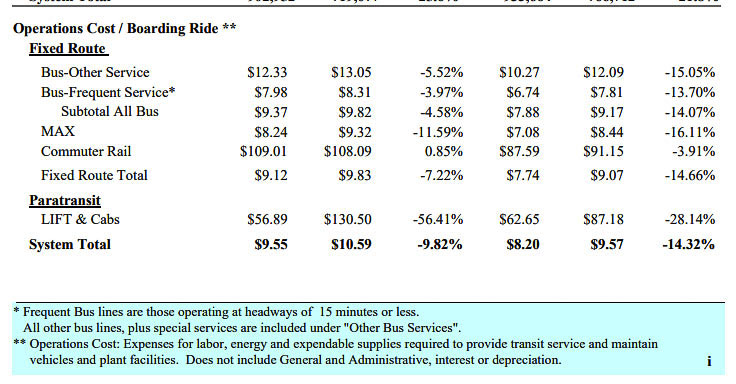
The 11 HCT options include six with light rail transit (LRT) only; 3 with bus rapid transit (BRT) only; one “hybrid” that has a combination of LRT and BRT. There is also one option for a Bus on Shoulder (BOS).
The IBR team members are evaluating transit ridership for 2045. They are using multiple measures in their evaluation. The team reports LRT capital costs are much higher, but operating and maintenance costs are much lower, compared to BRT.
Substantial demand?
The team’s draft findings say “there is substantial demand for cross river transit service.”
That finding might surprise many citizens. C-TRAN offers the only cross-river transit service today, because there is minimal demand. Passengers boarding on their “express” bus service has plummeted over 60 percent compared to pre-pandemic levels. For the east Vancouver service from Fishers Landing, there was nearly an 85 percent decline.
Last summer, C-TRAN announced significant permanent cuts in their 2022 service. Furthermore, TriMet said they don’t expect their ridership to return to pre-pandemic levels for six years.
C-TRAN ridership peaked over 20 years ago in 1999, when it had 7.75 million annual boardings. It has been hovering around 6 million boardings for over a decade.
TriMet ridership peaked about a decade ago, at the end of the Great Recession. Recently it lost 60-70 percent of their ridership. Their MAX ridership peaked in 2012 with 35 million annual boardings. The Orange line to Milwaukie opened in Sept. 2015, but the new line failed to generate increased system ridership. Light rail system ridership was just below 31 million boardings in 2019 and dropped to 12.9 million in 2021.
Furthermore, TriMet’s FY 2021 report indicates that its “operating cost per boarding rider” was cheaper for “frequent bus service” than it was for MAX light rail. The “frequent bus lines” were those operating at 15-minute intervals and had a cost of $7.98 per boarding passenger. Light rail cost was $8.24 per boarding passenger, or over 3 percent more.
But those are system wide. The Yellow line has an average 6,280 weekday boardings. The Blue line carries over three times more at 21,280, the Red line at 10,250, and 8,910 on the Green line. The Orange line trails with 4,140 average weekday boardings.
That would seem to indicate the Yellow line ridership would be the second most expensive light rail service and much higher than the $8.24 per passenger of systemwide MAX ridership.
The IBR staff is expected to release the “data” and the details related to a choice of high capacity transit next month.
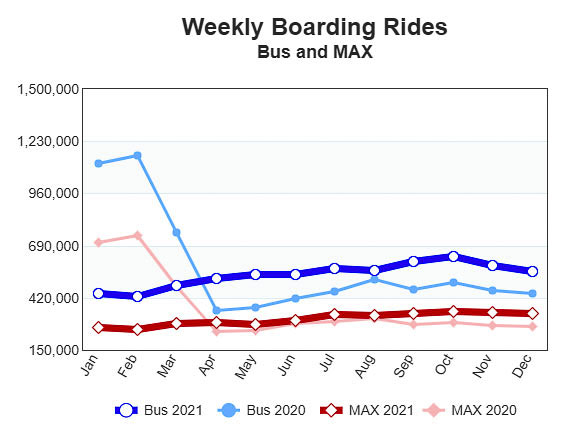
Also read:
Members of Vancouver City Council question Oregon’s tolling program
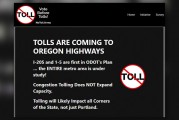
Open house on tolls collects input from county residents
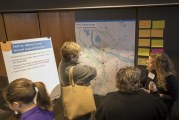
Tolling to pay for Oregon’s ‘band aid’
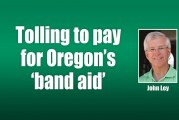
C-TRAN ridership continues pandemic caused decline in 2021
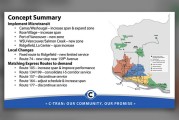
C-TRAN 2020 ridership declines due to COVID pandemic restrictions
